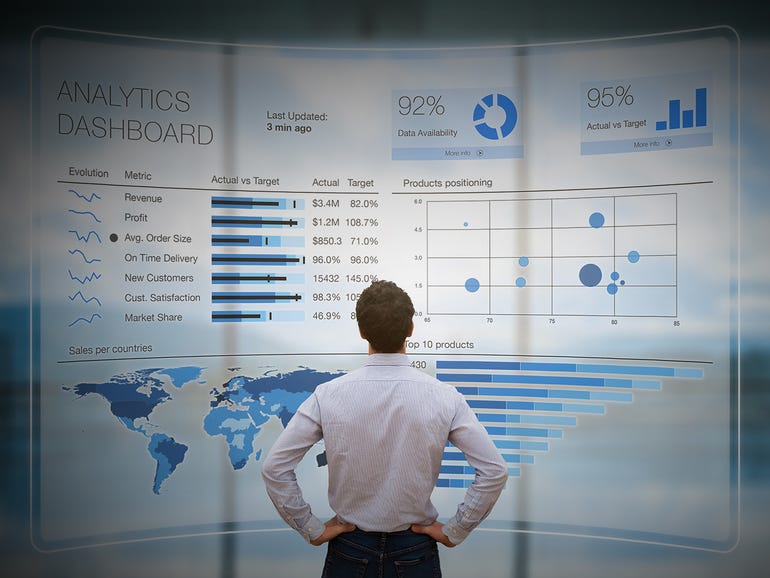
Data analyst jobs include looking at information to learn about organizations, consumers, and markets. Their insights help organizations make more effective decisions, products and services, and marketing strategies.
The Bureau of Labor Statistics (BLS) projects 22% employment growth for market research analysts between 2020 and 2030. A major increase in organizational data usage and applications drives those new jobs.
Here, we explore data analyst jobs and what it takes to land them.
What do data analysts do?
Data analysts fill many roles. Their main duties typically include:
- Collecting, mining, and analyzing sales and market information
- Assessing marketing effectiveness
- Evaluating consumer purchasing habits and patterns
- Designing data collection and evaluation tools
- Creating projections and reports based on their findings
These professionals usually need strengths in mathematics, communications, and social sciences. They benefit from understanding business, economics, and consumer behaviors.
According to the BLS, the consulting services, finance and insurance, and management fields commonly employ data analysts.
Analysts work with marketing professionals, management, and organizational stakeholders. Related job titles include market research analyst, demographic analyst, or data scientist.
Data analyst vs. data scientist
Data analyst jobs and data scientist jobs can overlap. The data science field encompasses much of data analytics.
While data analysts use information from limited datasets to solve specific problems for organizations, data scientists pull from large and unstructured datasets to identify risks and provide outcome predictions.
Data analyst work-life balance
Data analysts usually work traditional business hours. Tight deadlines add business and stress to their schedules.
As a data analyst, you may enjoy remote work opportunities. You can work from anywhere with data and analytics software access.
Data professionals may need to pursue continuing education or self-study to stay competitive and familiar with the latest trends and technologies. Professional certifications, such as the Insights Professional Certification, also require continuing education.
Data analyst salary
According to PayScale, the average base salary for data analyst jobs was $62,789 as of April 2022.
Experienced professionals tend to earn more than beginners, with entry-level professionals earning $57,000, mid-career professionals earning $70,000, and experienced professionals earning $73,000 on average.
The median annual wage for market research analysts was $65,810 in May 2020. The top 10% of professionals in this field made more than $127,410.
Industry, skill level, location, and skillset help determine earnings.
Best-paying states for market research analysts
| State | No. of analysts employed | Annual mean wage (May 2020) |
| Washington | 27,560 | $92,350 |
| New Jersey | 19,830 | $91,290 |
| Delaware | 2,240 | $89,240 |
| New York | 70,770 | $85,090 |
| District of Columbia | 7,300 | $84,340 |
Source: U.S. Bureau of Labor Statistics (May 2020)
What does it take to become a data analyst?
Data analyst jobs welcome candidates from many backgrounds. Graduates may access the field with a computer science degree, a business degree, a mathematics degree, or even a social science degree.
According to the BLS, these positions usually require at least a bachelor’s degree. A data science bootcamp may also lead to entry-level employment.
Employers may prefer candidates to have relevant experience or advanced training, such as a data analytics master’s degree.
Industry certification can help professionals advance their careers. It demonstrates a high level of knowledge and at least three years of relevant experience.
What skills do I need as a data analyst?
In addition to the specialized hard skills you need to qualify for data analyst jobs, you need to hone people or “soft” skills.
Data analysts need to be able to think critically, solve problems, and communicate their findings in a clear and concise manner.
Hard skills
- Data visualization
- Data cleaning and preparation
- Calculus and linear algebra
- SQL and NoSQL databases
- Microsoft Excel
- Programming languages: Python, R, SQL
- Database creation and navigation
People skills
- Problem-solving
- Communication
- Critical thinking
- Analytical
- Observant and detail oriented
Unless otherwise noted, salary and job growth data is drawn from the U.S. Bureau of Labor Statistics as of April 14, 2022.























